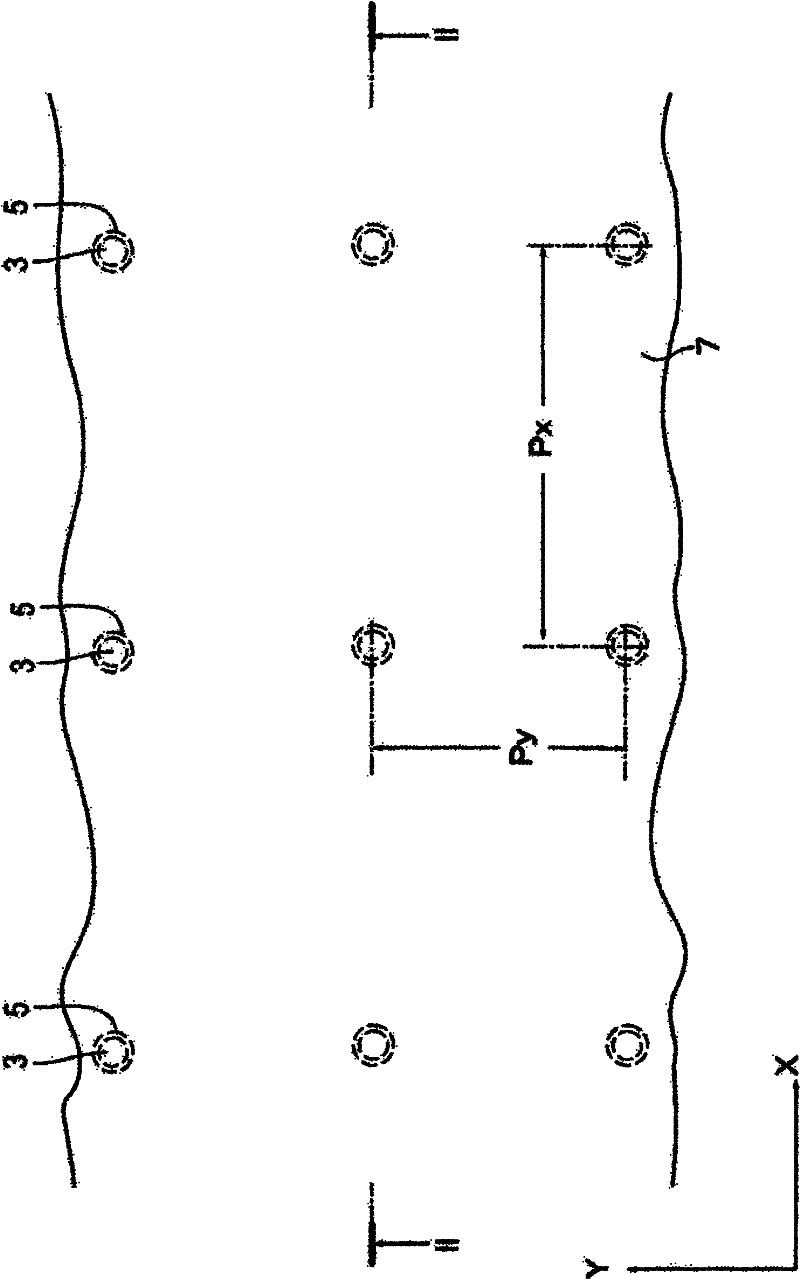Solar cell
A solar cell and battery technology, applied in the field of solar cells, can solve the problems of reduced power generation efficiency, shadow loss, carrier recombination loss, etc., and achieve the effect of high power generation efficiency
- Summary
- Abstract
- Description
- Claims
- Application Information
AI Technical Summary
Problems solved by technology
Method used
Image
Examples
Embodiment Construction
[0026] figure 1 and figure 2 It is a diagram showing a representative example of a crystalline silicon solar cell, and includes a first conductivity type semiconductor layer 1 , a second conductivity type semiconductor layer 2 , a first electrode 3 , and a second electrode 4 .
[0027] The surface of the first conductivity type semiconductor layer 1 serves as a light receiving surface, and the second conductivity type semiconductor layer 2 is provided on the back side of the first conductivity type semiconductor layer 1 to form a pn junction with the first conductivity type semiconductor layer 1 . More specifically, the second conductivity type semiconductor layer 2 is formed of a p-type silicon substrate, and the n+ layer first conductivity type semiconductor layer 1 is formed on the light receiving surface side of the second conductivity type semiconductor layer 2 . Therefore, the second conductivity type semiconductor layer 2 formed of the p-type silicon substrate forms a...
PUM
 Login to View More
Login to View More Abstract
Description
Claims
Application Information
 Login to View More
Login to View More - R&D
- Intellectual Property
- Life Sciences
- Materials
- Tech Scout
- Unparalleled Data Quality
- Higher Quality Content
- 60% Fewer Hallucinations
Browse by: Latest US Patents, China's latest patents, Technical Efficacy Thesaurus, Application Domain, Technology Topic, Popular Technical Reports.
© 2025 PatSnap. All rights reserved.Legal|Privacy policy|Modern Slavery Act Transparency Statement|Sitemap|About US| Contact US: help@patsnap.com



